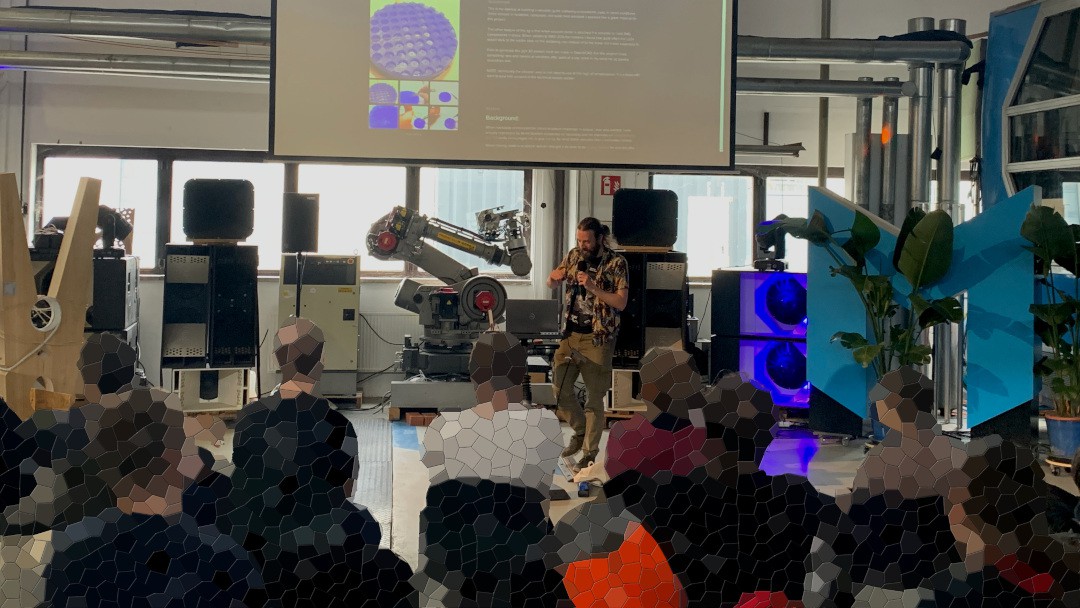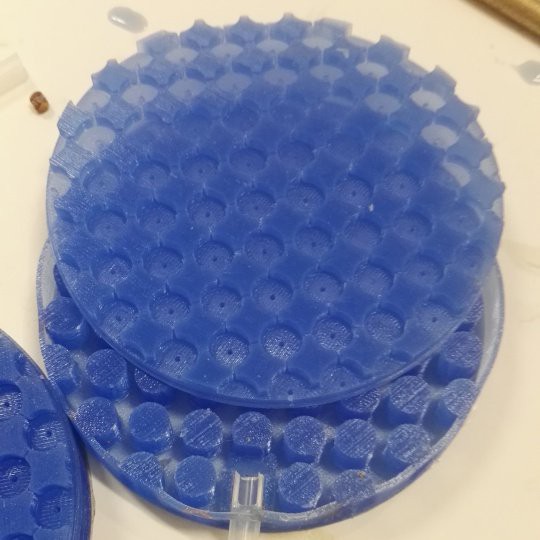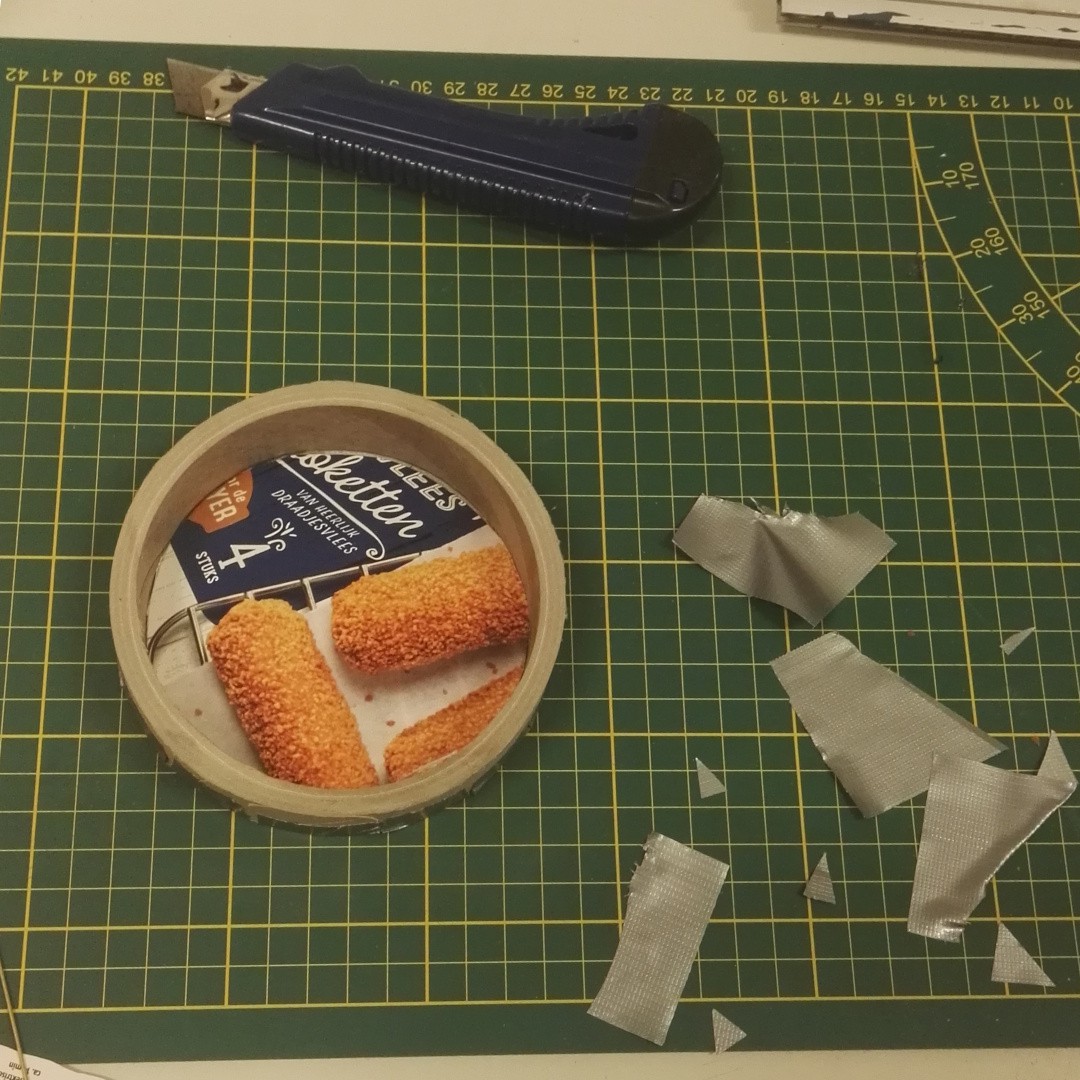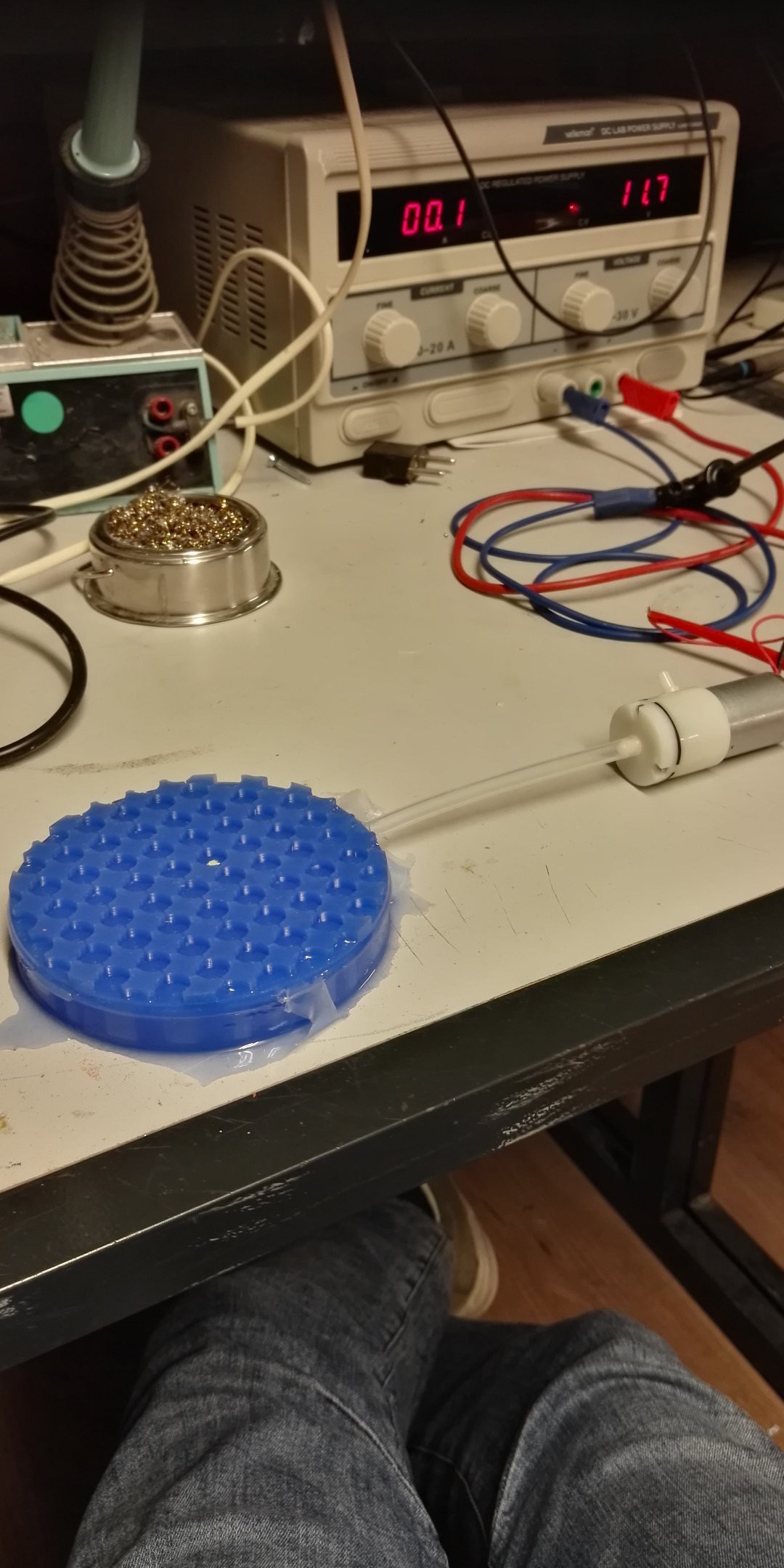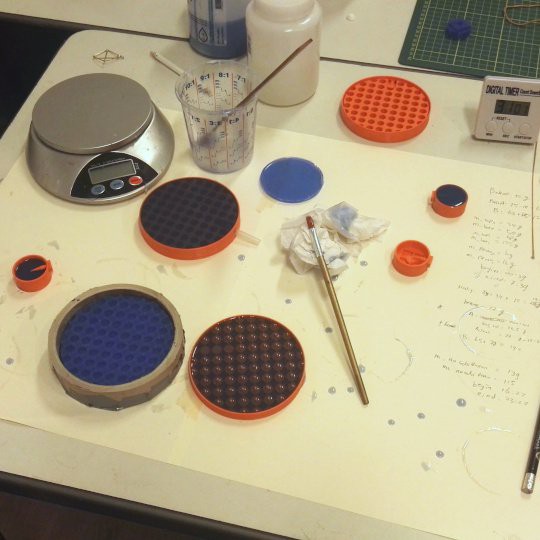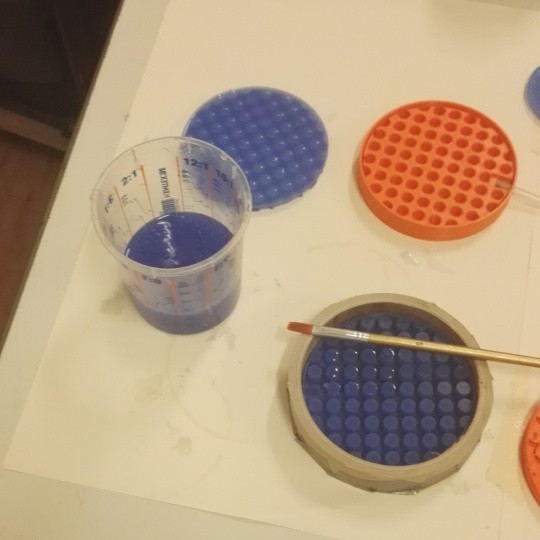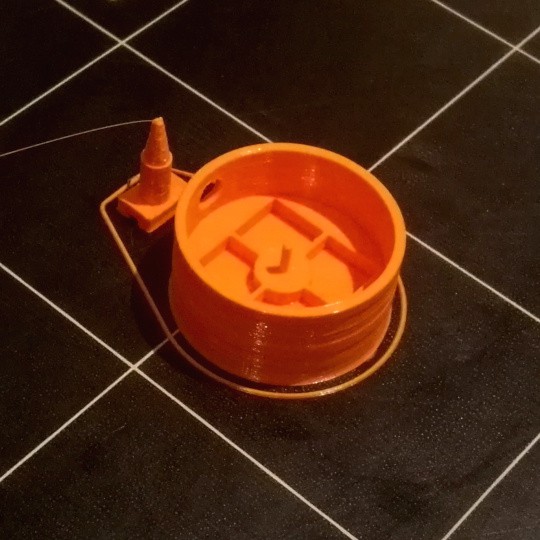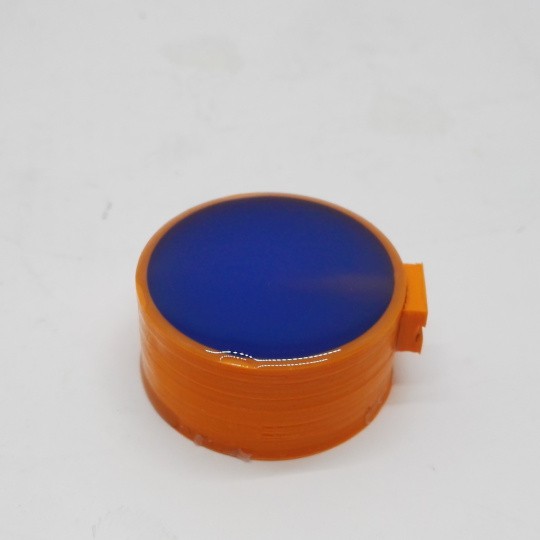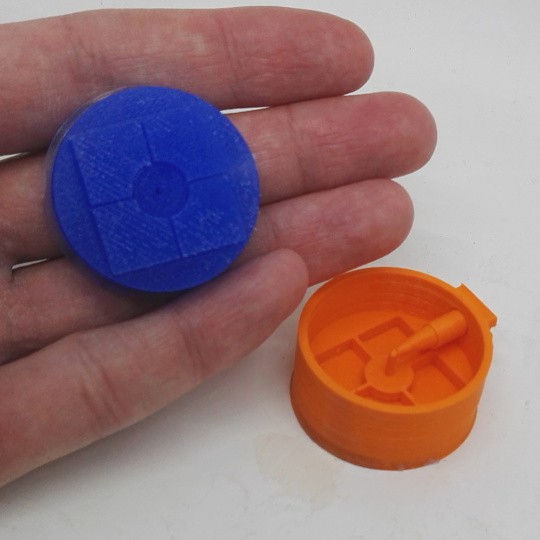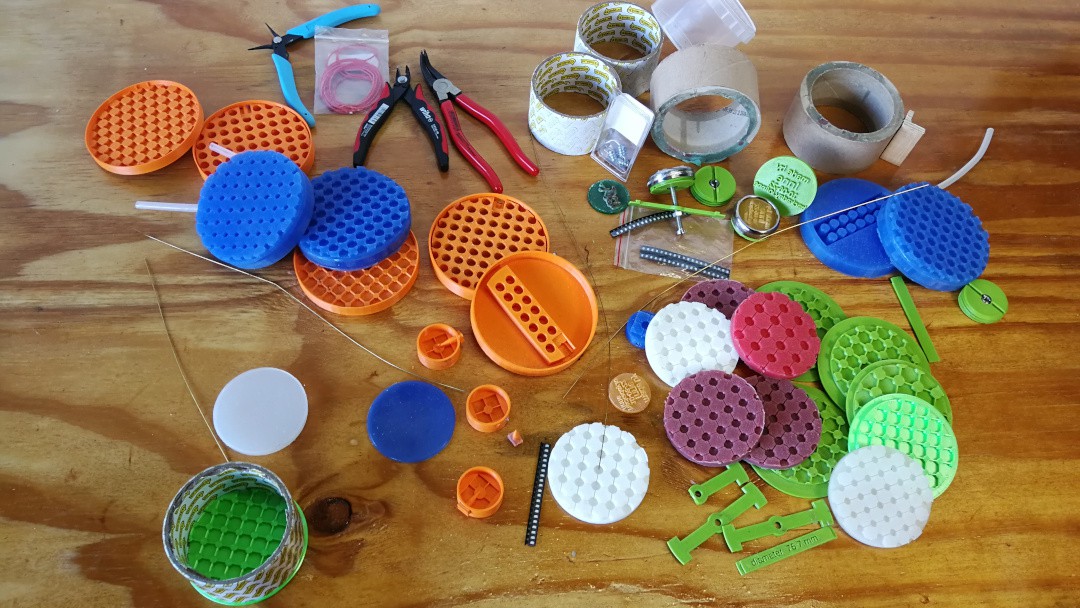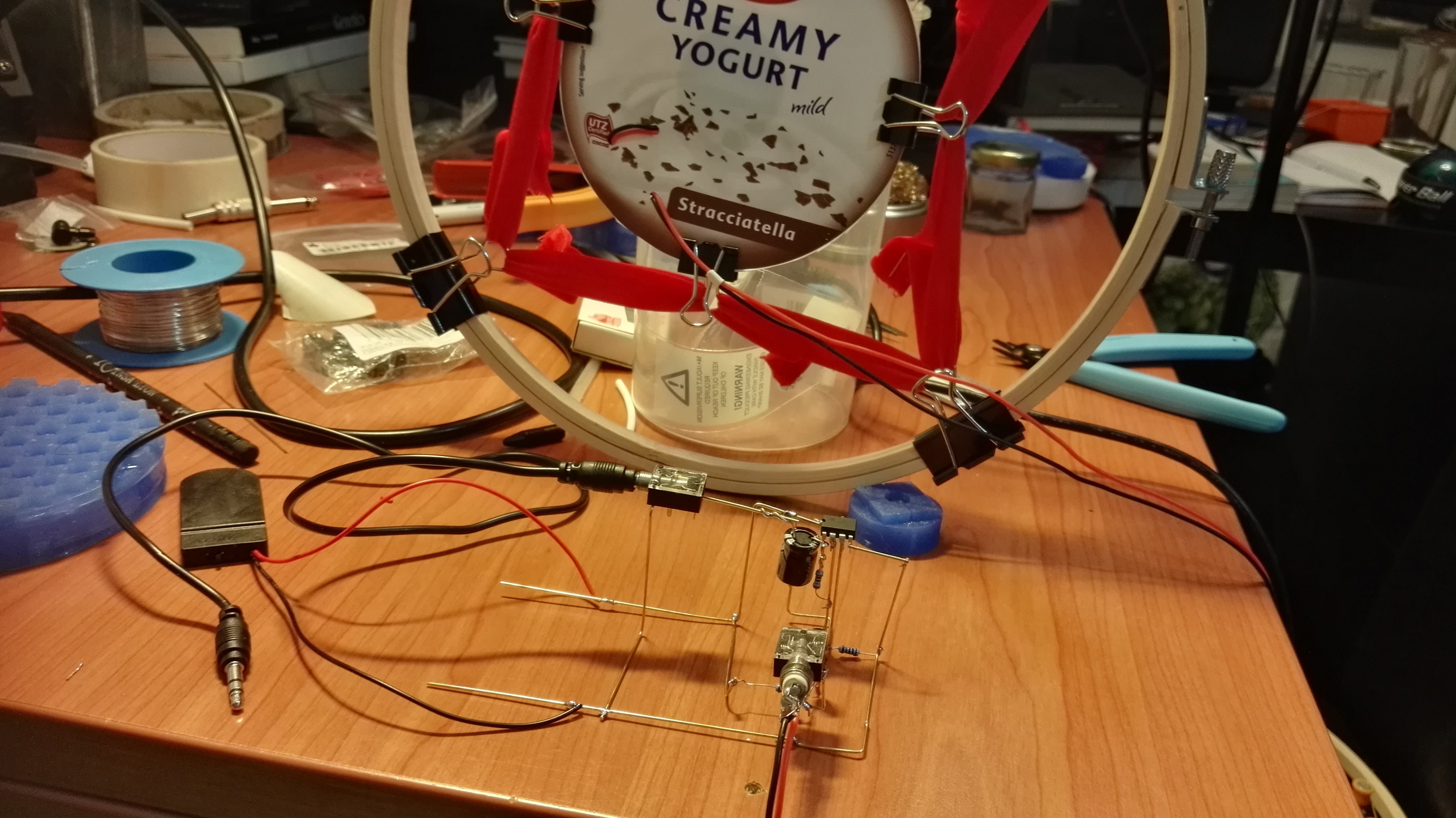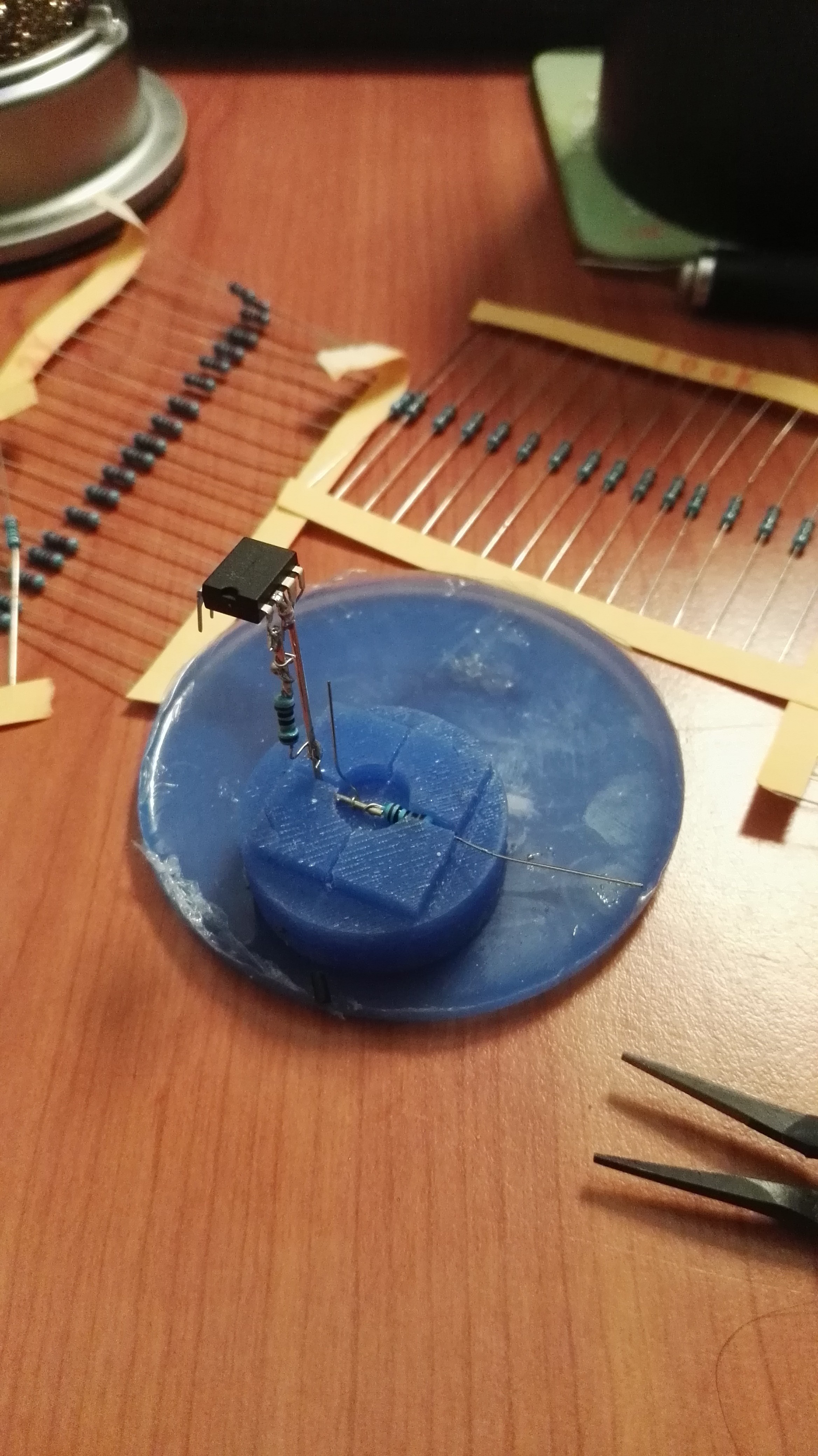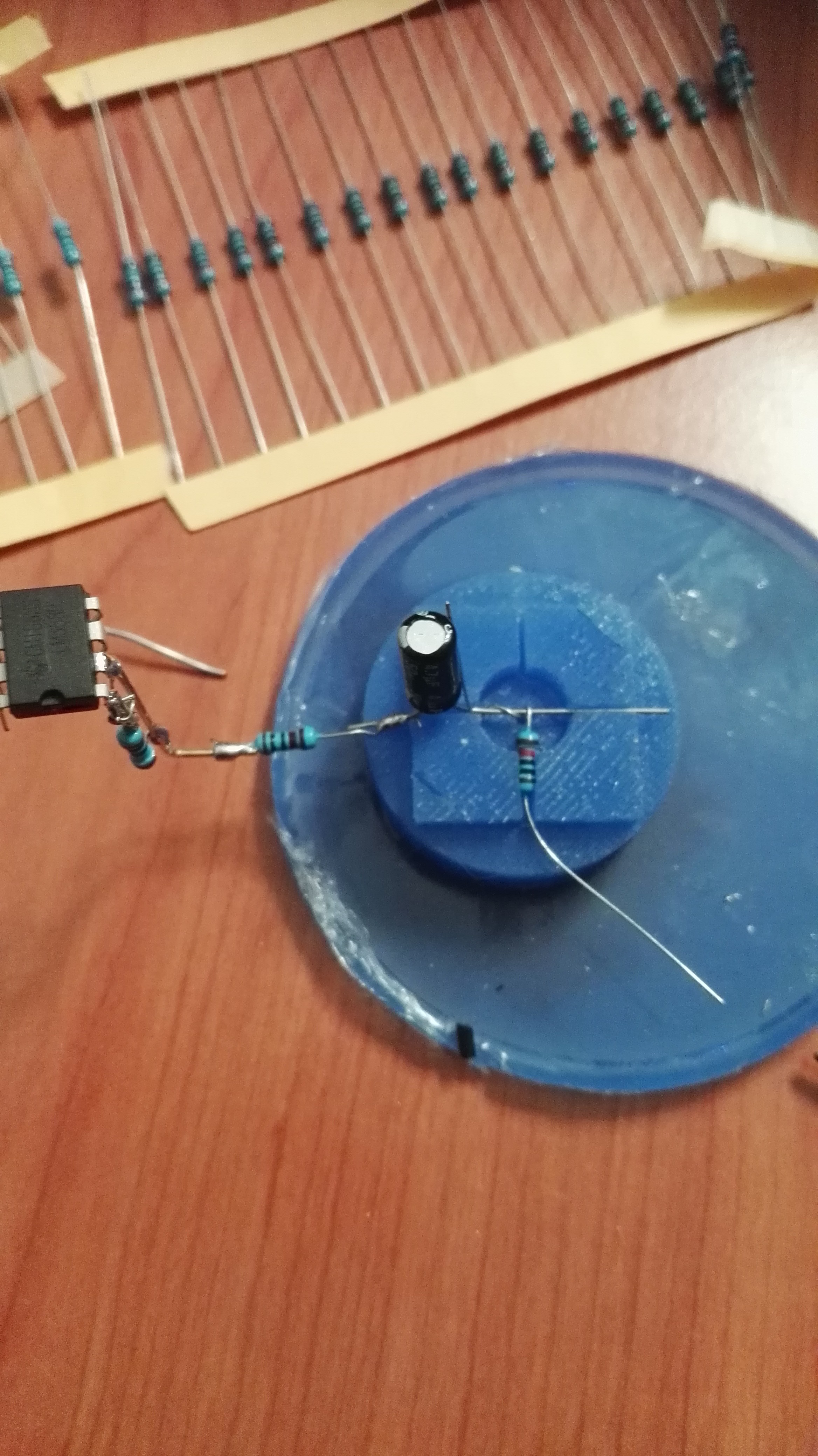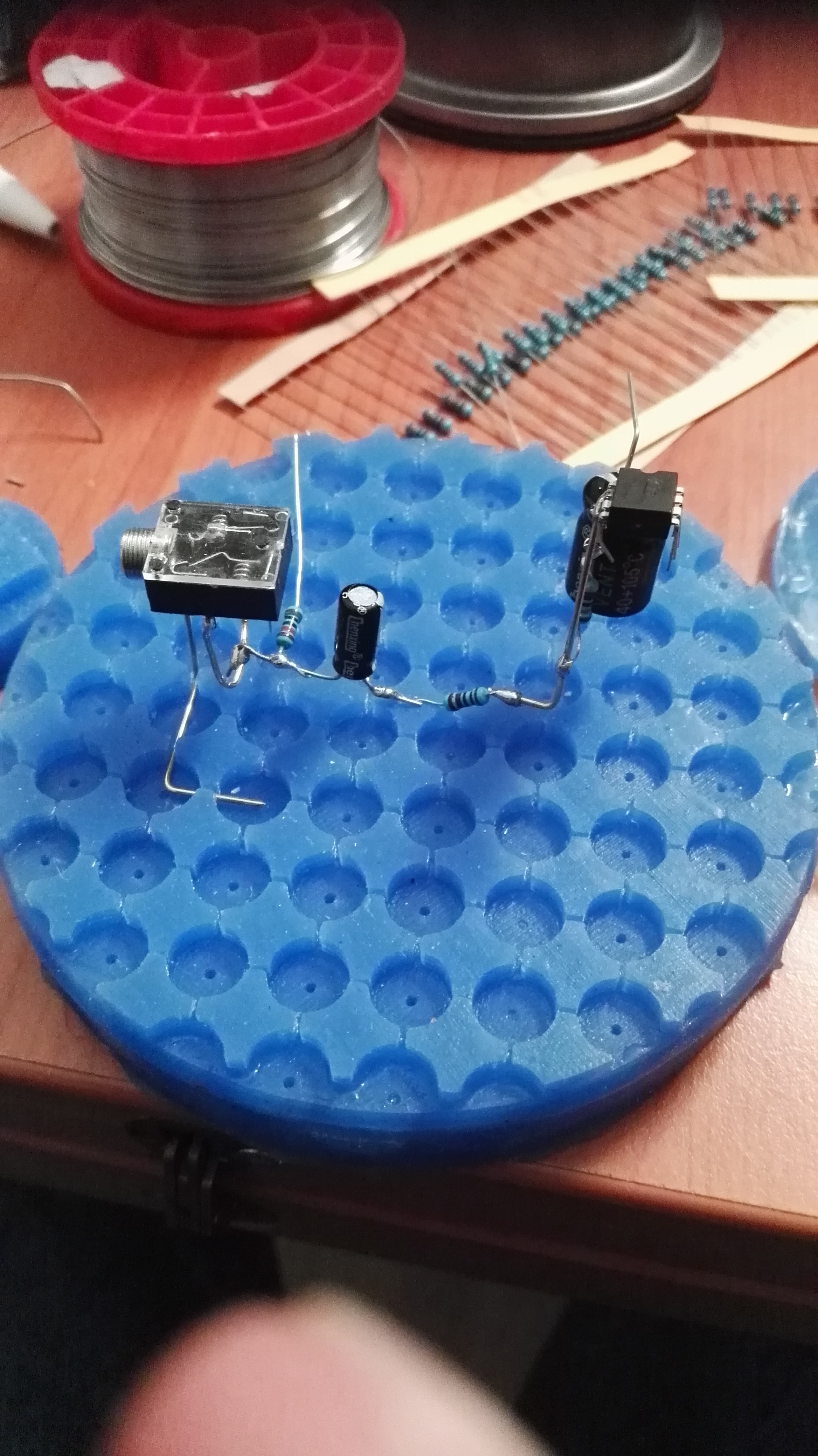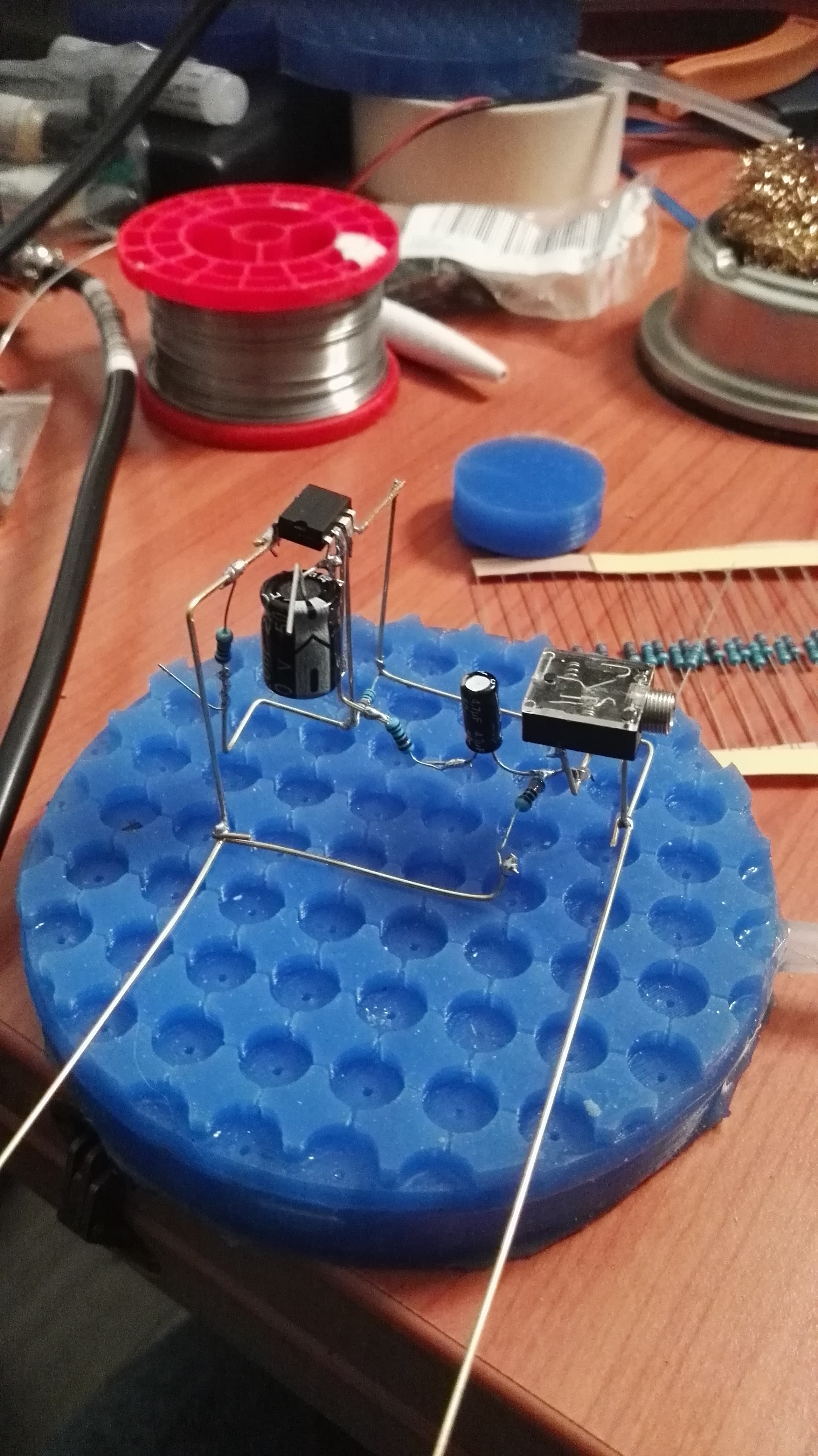-
The big recap post
04/16/2023 at 21:37 • 3 commentsNote
This project log is for everyone that wants to know what happened with the soft soldering jig since the last update. If you are mostly interested in the newest files please hold out for a bit; in the coming week I will be publishing the files for version 3 (v3) of the jig.
Renewed interest
It is good to be back. After being featured on the Hackaday blog and podcast (ep213) last week, my motivation has very much returned. Since I last submitted something, in 2020, I have been working on and off on this project doing bits and pieces. This post is to catch up with what has happened since then, what works, what needs improvement and what my goals are for this project. Sprinkled with a bunch of pictures to keep it entertaining.
Festivals and talking to people.
In 2020 this project won a prize in the special category (best jig) of the circuit sculpture contest. It was a really validating experience, and really felt like something I made was appreciated and celebrated.
In the years after, I kept taking the jig to Makerfestivals and Hackercamps. Both to solder on and to show as part of my portfolio. They came in handy many times, though not as often yet to make actual circuit sculptures.
One of the coolest things was when someone asked me if this could be used to mix fluid droplets for microscope. We tested it on the spot, and it worked pretty well. It was really interesting to hear the feedback, whenever I showed the soft soldering jig.
All and all, I am very happy I wrote up this project page. Consistent writing and documenting doesn’t come natural to me. However, having all the files and photos in one place, somewhere that you can point someone to, has been great. I am glad I did it, and can recommend to everyone making a project to give it a try and see where it goes.
![Picture 1 Inne giving a presentation in front of a screen showing the Hackaday IO page of the soft soldering Jig. The audience at the bottom is mosaicked out]()
Picture 1: Giving a lightning talk during Hackaday Berlin 2023, that kicked of the renewed interest. A look at the technical side
Time to look back on the Hardware. As of posting, there are 3 versions of the jig, v0, v1 and v2 with v3 coming shortly. V0 is cute, small and has working vacuum. V1 is the main design, has top and bottom layer and doubles as fidget toy. For v2, the mold has brass rods inserted, instead of 3D printed ones, they make me less sad when they inevitably break in transport, as opposed to v1. The following are the lessons learned along the way.
The vacuum suction system
As it stands, the vacuum system is a major failure. The core principle doesn't work, it was supposed to hold SMD components in place so they wouldn’t stick to the soldering iron. There are however too many (man)holes to create proper suction. You would need to cover all of them. Even with the v2 model with fewer holes, you would still need to plug them all, which is too much work.
Initially, I was hoping the air pumps would be strong enough, and the (man)holes tiny enough, that the suction was sufficient. However, even once you plug all the holes, the silicone is too flexible to withstand the vacuum and will cave in.
Therefore, the SMD hold-in-place system needs a redesign. This can be either vacuum or something completely different. Since there are other, more pressing, design challenges; I decided to remove the complete underside from the jig (for v3). Even though, suction does work for v0. Removing the underground saves a lot time on production and makes everything easier to work with. See Picture 2 to get an idea of what assembling them involves. It shows connecting the top (above ground) and bottom (underground) parts for jig v1.
![Picture 2a The silicone parts of jig v1 not put together yet.]()
![Picture 2b Circular jig holder being made on a cutting mat.]()
![Picture 2e Electronics bench with finished jig v1, airpump connected to powersupply reading 11.7 volts.]()
![Picture 2c Table silicone jig parts being glued together by brushing more silicone.]()
![Table filled with just poured jig v1 molds, plus other equipement. general overview
width= 270
title=]()
Picture 2: Assembling jig v1. a) Both halves of the silicone for jig v1. b) Make shift tool to center halves on top of each other, a cardboard tube happened to same diameter as the jig. c) Example of pouring the (other) parts of the mold, left over silicone goes in v0 molds. d) Gluing the cured halves together by brushing on more silicone, which makes a permanent bond as if it would be poured in on go. e) Testing the assembled jig v1 with a little DC air pump, more silicone was brushed on to close gaps. The good things
During use, these where the things the jigs performed really well at. It is excellent if you want to solder directly on the table. Interestingly, common tasks in general soldering, like connecting wires or soldering components with leads, work well. It also provides a (flat) surface to solder PCBs on the go.
Circuit sculpture wise, I am content with how well the jig holds brass rods in place. The flexibility of the silicone makes it easy to place and remove them, this goes very quickly. It turns out that since the silicone springs back to shape so easily (it's compliant), the width of the streets (the lines on the grid) doesn’t need to be precise, and will hold multiple diameters of rods quite happily.
The jigs are also easy to carry and resilient to wear and tear. Especially if compared to the cumbersomeness of helping hands or poster putty which needs to be replenished. Bringing the soft soldering jigs along is delightful.
The number of angles
Almost everyone I show the jigs to tends to give the same immediate feedback: "This is great but I would like more angles." This comment is very fair, and is the next focal point. The main reason this is not implemented yet, is that I couldn’t wrap my head around the complexity of finding the right angles, and how everything would interact. It seems that trial and error will be the preferred method to solve this; with the production time greatly reduced for v3, experimenting angles should be a lot easier.
Jig v0 is special
And then there is jig v0, the initial prototype. It was meant as a minimal proof of concept but it turns out to be very viable in its own right. V0 is quick to print, needs little silicone and the mold is easy to work with. The suction even works, but since the electronics are bigger than the jig, its better to do without. Jig v0 has potential and its concept might be revisited at some point. The production of them isn't shown of yet, so picture 3 shows a bit of the process.
OpenSCAD
The city theme for naming the OpenSCAD variables is fun, and I’ll try to stick with it. Though, I won’t be using it for the small peripheral components like measuring sticks, and hold in place doodads. So it is mainly for the main component, the mold of the soft soldering jig.
![Picture 3a Finished orange 3D print of mold v0.]()
![Picture 3b Close up of same mold full of blue silicone.]()
![Picture 3c Hand shows the result Jig v0 next to the mold it came from.]()
Picture 3: making jig v0. a) 3D printing the mold in PLA, b) Mold is filled with silicone, c) de-molding resulting in Jig v0. Future goals for the soft soldering jig.
From the moment I decided to enter the contest my goal was that: “It would make me really happy if people would use these jigs in the next Hackaday circuit sculpture contest.” So you being able to try one would be a good next goal.
If you want to build one for yourself; version 3 of the jig would be the best place to start. This time around I will try to post updates more bit by bit, instead of aggregating them till complete. The 3D models are there and the jig has both been produced and tested. Pictures still need to be sorted and build instructions (yes we will have those now) need to be written, hopefully in the coming week.
For myself, giving a workshop with them, and getting hands-on experience how other people use them would be nice. Getting some more experience making the sculptures would be a welcome improvement for me as well.
Thank you for reading this lengthy update, and your interest in the soft soldering jig. Also thanks to the Hackaday staff and community for reminding me that this is indeed an awesome project. And lastly, everyone in my local maker network that support me. I hope to show all of you, more of the jig in the future.
![Picture 4 A wooden, table with pile of parts components and tools. Mostly silicone jigs and 3D printed molds. Some of them not documented on the project page yet.]()
Picture 4: The pile of progress. -
Soft soldering jig in action
11/10/2020 at 02:19 • 0 comments![]()
TLDR: Made an audio amp just look at the pictures.
Realizing that I haven't really posted anything about this jig in action, I took the opportunity to make this post. Not making an actual sculpture for the circuit sculpture contest left me a bit without pretty pictures. Though I actually use this jig quite often for soldering wires and components (i.e. non circuit sculpture activities). Thankfully the Remoticon gave me a nice opportunity to take some pictures of an audio amp I build.
During the remoticon I joined the "finding sound and making microphones" workshop. Part of the workshop involved making your own mic using a piezo element. On the required materials list was an audio amplifier which I managed to source before the workshop. However it turned out to be very much broken when I retrieved it from its packaging.
This being at noon while the workshop was in the evening it left me some time to build up anxiety about failing to meet the requirements. But also time to remember that I bought some LM358P OpAmp ICs once. At the time they were to complicated but turned out to be super welcome right now.
I googled a diagram for an audio amplifier and tried to match the value of the passive components as best I could. Which turned out to be only a capacitor that was 4.7 uF instead of 10. Starting with one of the LM358 pins I followed the traces in the diagram, adding parts as I encountered them. Sometimes having to take a minute to think how the pins/traces will interact, but overall its a quite relaxing experience. Even if you don't see the appeal in making pleasing art, I would definitely recommend you give this kind of "sculpture" a try. If only to experience this method of "getting things done".
In the evening the workshop came around. I will not pretend that this method saved my bacon, because at the time I was too scared to plug it into my computer. Luckily the piezos provided audible sounds even without amplification. after the workshop I spend some time finishing the mic and while staring at my brass rod structure masquerading as an amp I couldn't resist the urge to finish it and plug it in. To my complete amazement It turned out to be actually functional. The amp even boosted the mic in such a way to allow me to sit at an comfortable distance away from it.
Moral of the story. I guess that it is useful to have a general purpose soldering tool/jig. It feels amazing to promptly finish something with parts you have lying around. And please take a look at the pictures.
![Building an audio amp 1 Building an audio amp 1]()
![Building an audio amp 2 Building an audio amp 2]()
![Building an audio amp 3 Building an audio amp 3]()
![Building an audio amp 4 Building an audio amp 4]()
Soft Soldering Jig
Circuit sculpture jig consisting of a vacuum pump attached to a silicone pad to keep rods and SMD components in place when soldering them.
 Inne
Inne